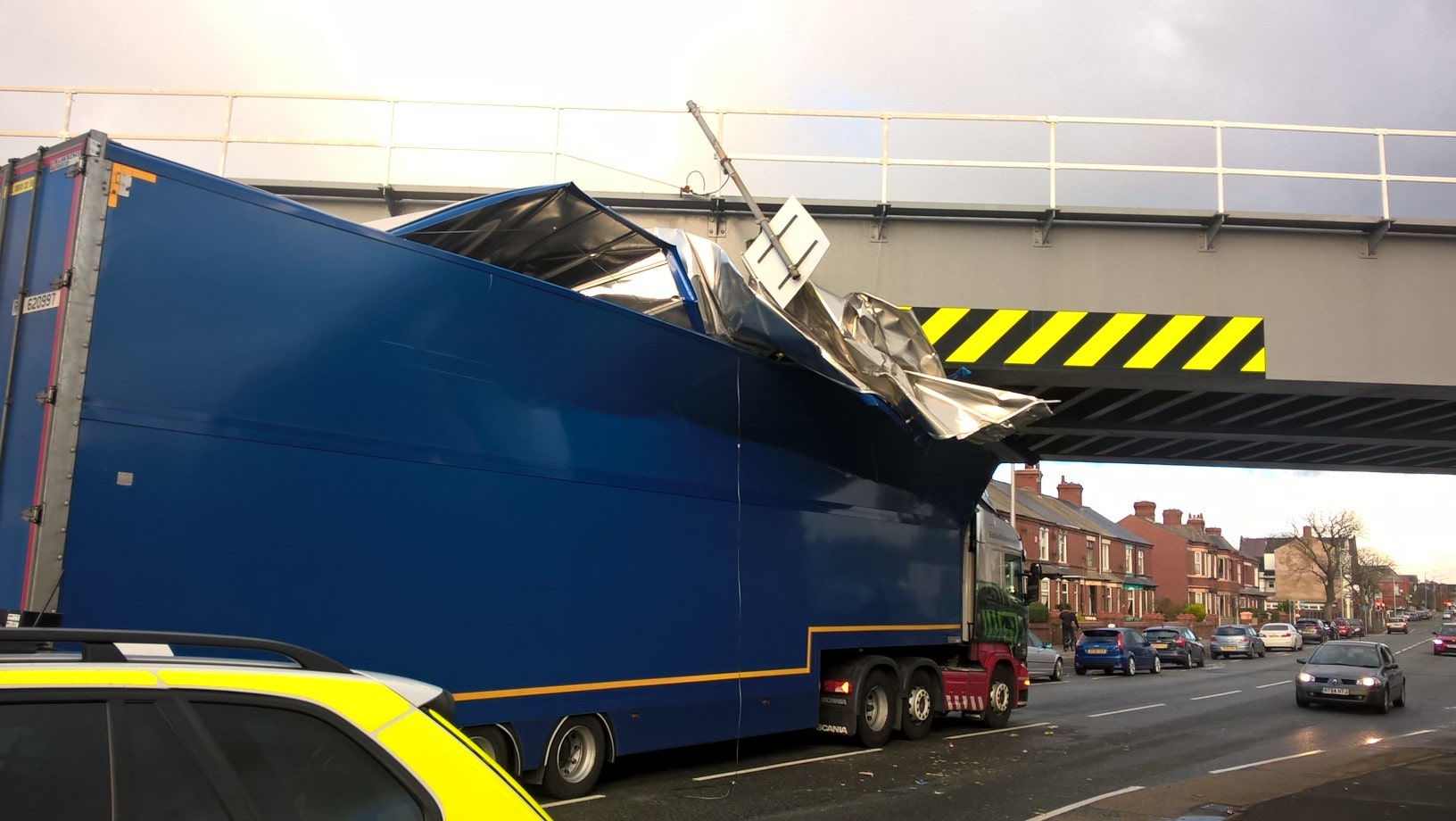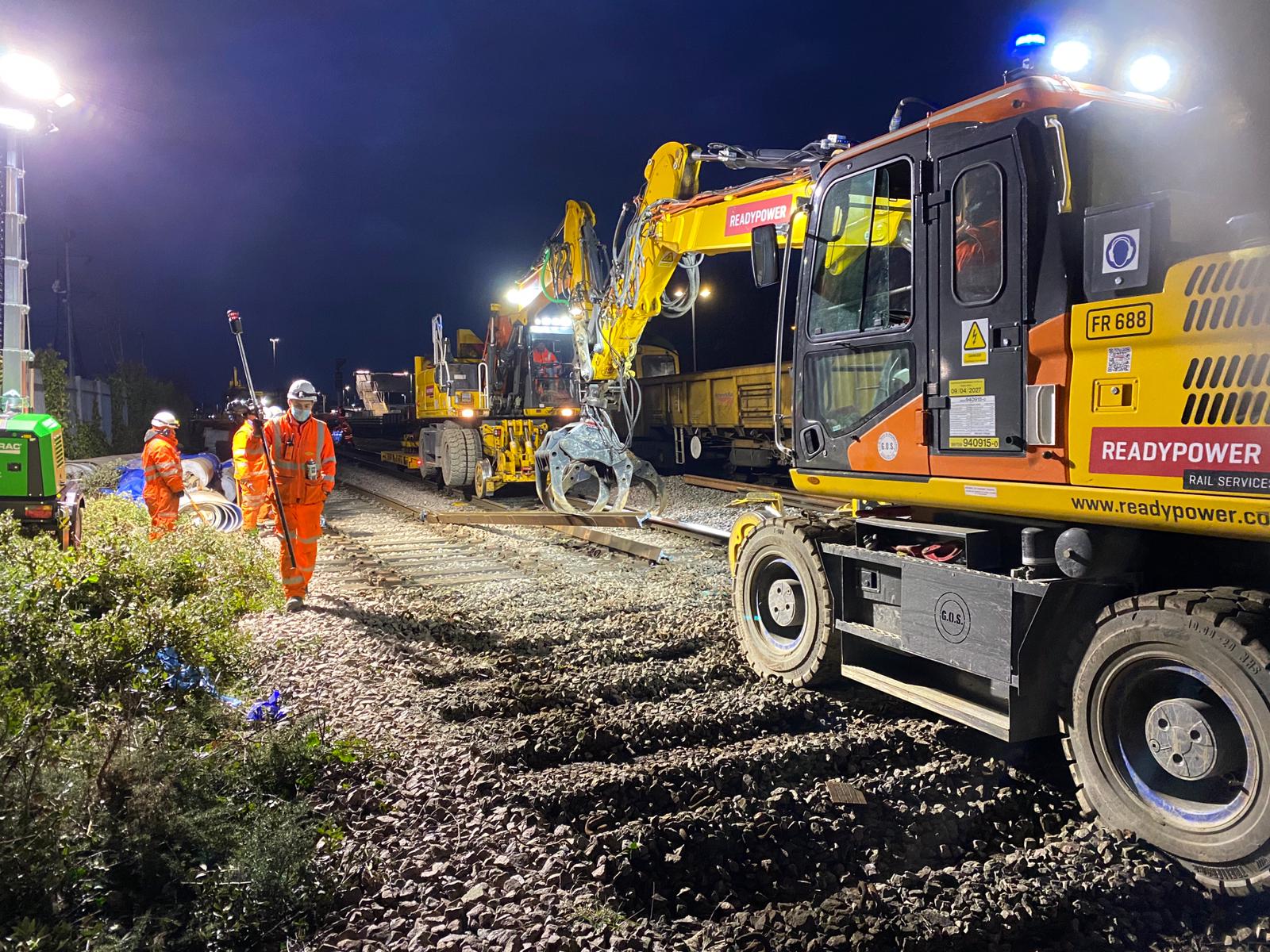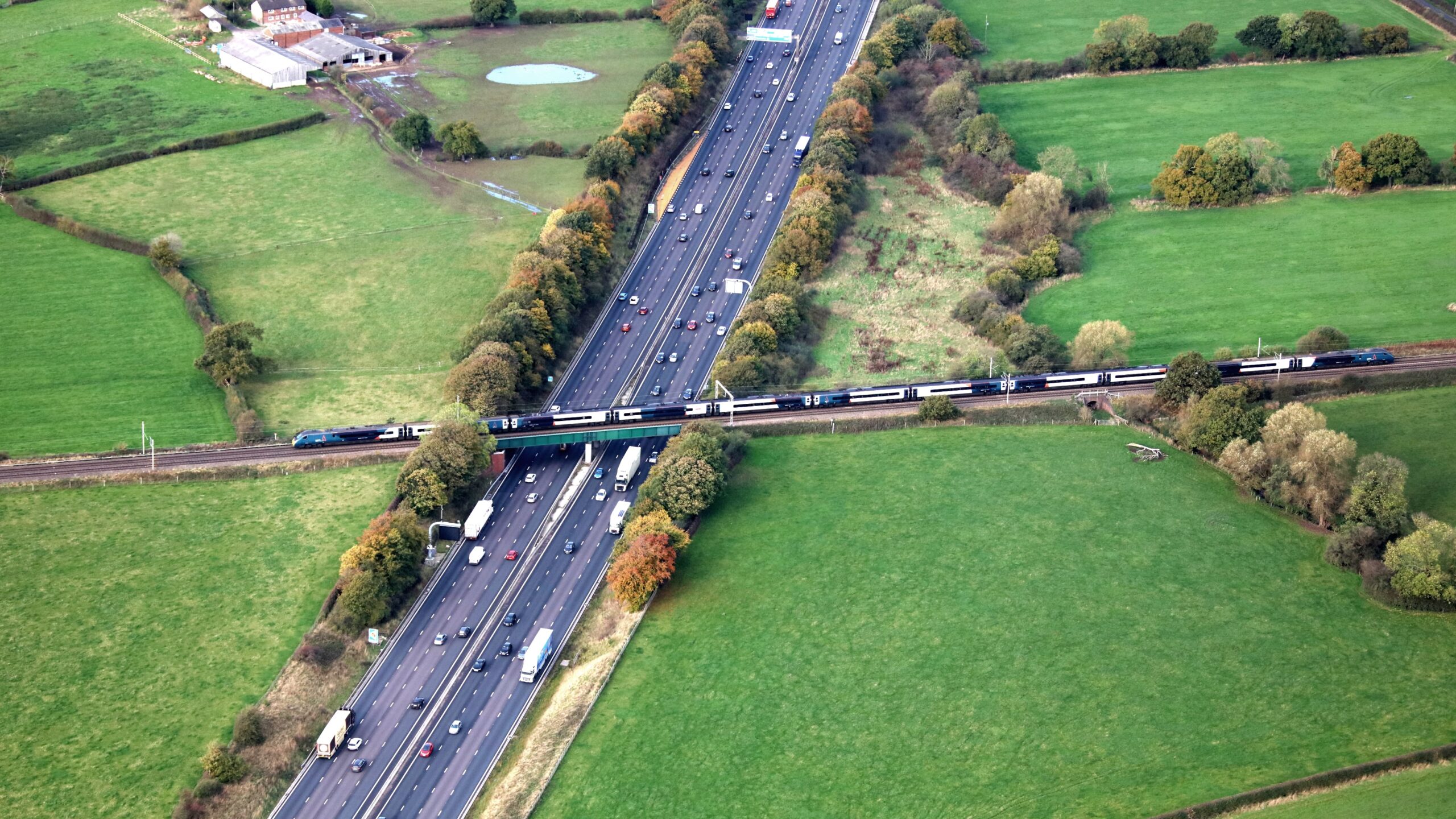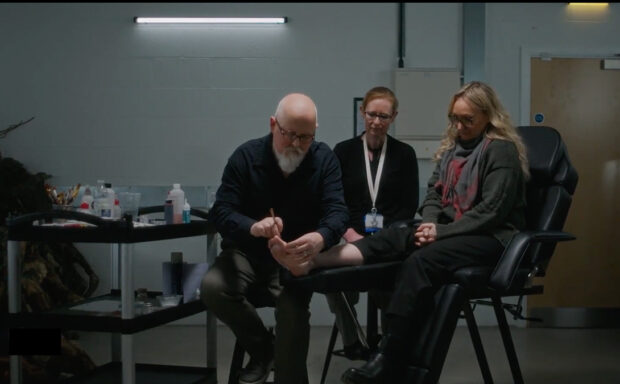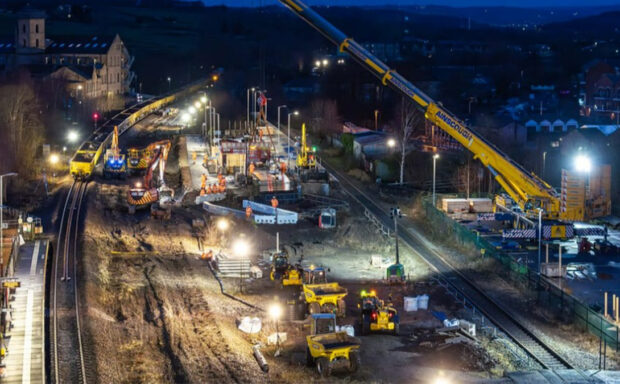The Black Friday and Christmas delivery rushes are fast approaching.
This means more large vehicles on Britain’s roads so we’ve revealed the most-struck railway bridges in the country as part of our new campaign.
The ‘Wise Up, Size Up’ campaign urges lorry drivers and haulage operators to know the heights of their vehicles. It comes bridge strikes have reached their highest numbers since the 2018 to 2019 financial year.
We recorded 1,833 bridge strikes in the 2021 to 2022 financial year, up from a five-year low of 1,624 in 2020 to 2021. The latest period has had the highest number of cases since drives caused 1,926 such incidents in 2018 to 2019.
Costing Britain’s tax payers
They cost us almost £12m in delay and cancellation fees between April 1 2021 and March 31 this year.
They also cause thousands of hours of train delays for passengers each year.
The Stonea Road bridge on the B1098 in Cambridgeshire has the unflattering title of the most bashed bridge in Britain.
Drivers struck the bridge 33 times in the year ending March 2022, amounting to £10,526 in unnecessary train delay and cancellation costs.
The other big hitters on the list include Lower Downs Road in Wimbledon, South West London, and Harlaxton Road bridge, Lincolnshire – struck 18 and 17 times respectively.
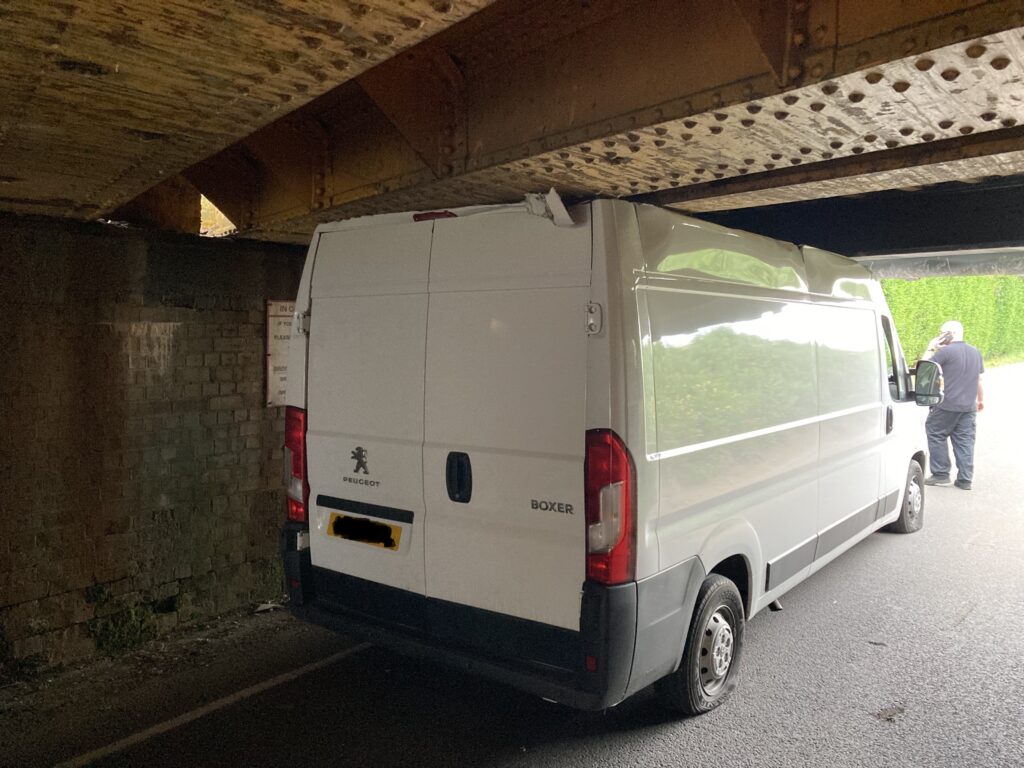
We’ve launched new animation as part of our continuing Wise Up, Size Up campaign. It’s to remind lorry drivers and haulage operators to take better care by knowing the heights of their vehicles and choosing suitable routes before they head out on journeys.
The retro-inspired cartoon centres on three high-sided vehicles navigating a low bridge in increasingly wacky ways, from pole-vaulting over it, to tunnelling underneath it. The animation is designed to warn HGV drivers that life is not like the cartoons and to take a moment to think before taking a risk when approaching low bridges.
Watch the Wise Up, Size Up animation on YouTube.
‘Serious safety issues’
Sir Peter Hendy CBE, chair of Network Rail, said: “Bridge bashers cause serious safety issues on the transport network for both road and rail users. Every incident can delay tens of thousands of passengers while we inspect the bridge and repair any damage – creating a huge cost from public funds.
“During this very busy time of year for deliveries, we urge operators and drivers to properly plan their routes, know the height of their vehicles and be vigilant for road signs showing the height of bridges. We will report those who don’t to the Traffic Commissioners, and they risk losing their licenses and livelihoods. Network Rail always looks to recover the entire repair and delay costs from the driver and the operator.”
Network Rail’s 4Es initiative – education, engineering, enablement and enforcement – aims to ensure haulage companies and their drivers are provided with the knowledge and tools they need to avoid striking bridges. As part of this ongoing initiative, Network Rail has a team of bridge strike ‘champions’ covering each route across Britain, who raise awareness of the issue by visiting haulage companies and lead in managing bridge strike risk locally.”
Read more:
Delays explained – bridge strikes
